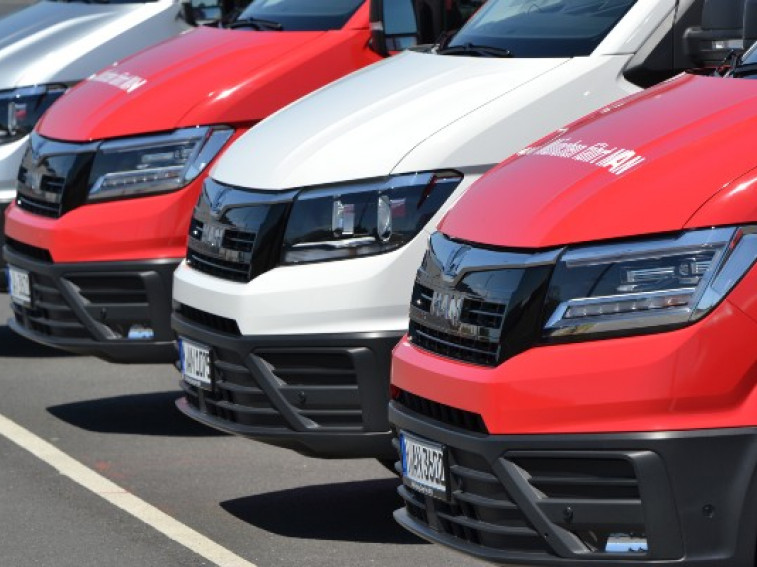After the – yes, here’s that word again – unprecedented year that was 2020, it’s fair to say that many of us were hoping that 2021 would be the year that things settle down a bit. Well, things were certainly a bit closer to normal than 2020, but we’re not quite there yet. As we move further into 2022, there are all sorts of new trends for fleet managers to keep track of, some of which have a good chance of influencing your purchasing decisions – whether from online car auctions like ours, or anywhere else.
Automation is here
This year has been classed as the one where the supply chain industry ramps up automated processes. How will be this be achieved? Mainly through the use of ‘smart’ shippers and carriers. As a result, this new technology should help save companies both time and money, without a negative impact on customers.
According to seasoned fleet managers, there are a few reasons that have sped up this trend. To start with, driver shortages have had a massive effect. So it's no surprise businesses are looking for more viable options.
Next is the rapid speed of the new Covid Variant: Omicron. Outbreaks of the virus have caused strict border rules between countries and have also made many ports close down due to the risk of further spreading. All of which has resulted in a great strain on the industry.
The continued rise in shared visibility data
To serve customers more effectively during a time of ports closing and a short supply of drivers, 2021 saw carriers sharing an increasing amount of visibility data. Moving forward to the present, this trend doesn’t seem to be slowing down any time soon, and in fact, is set to become more popular over the next few years.
This is because carriers that share high amounts of private real-time visibility information are more likely to stand out from others in the industry. It’s even predicted in the future that sharing this type of information with customers is likely to become mandatory to stay competitive in this ever-changing industry.
The takeover of supply chain visibility and other technology used
This year is expected to be where the last remaining supply chain leaders, that haven’t done so already like all others, implement the use of supply chain visibility. By doing so, they will have greater control when managing inventory items during the transit stage.
When the paperwork is concerned, whether it’s in the form of images or documents, the majority of it is required to be manually updated. However, 2022 is likely to see a significant amount of drivers switch from the old ways to newer and more up to date technology that allows them to complete these processes in a much faster manner.
A collective push for sustainability
After Glasgow hosted the COP26, many leaders in the industry agreed that more must be done to improve sustainability for their fleets. However, this doesn’t come as much surprise considering that transportation is the second-highest industry that contributes to carbon emissions.
The answer: electric vehicles (EV). 2022 is looking like it will be the year that electric vehicles are widely adopted into fleets. And with data showing electric vehicles are projected to outsell their internal combustion engine counterparts, the evidence of this happening is getting stronger.
Furthermore, the EV truck models currently on the market will be expanding to incorporate more options, perfect for enhancing sustainability for some fleets.
Disruption in the supply chain
Unfortunately, as we’re so often told, the pandemic isn’t quite over yet. For that reason, supply chains are still struggling. That’s why last-mile delivery will play a role in alleviating some of the disruptions. We will have an influx of businesses using fleets to help meet the demand created by online shopping, along with dealing with the increased need as some countries still have lockdowns in effect.
The use of telematics for insurance purposes
Dealing with vehicle insurance is a task that the majority of fleet managers contend with. As it currently stands, data is being used to personalise insurance products. When looking at how this relates to vehicles the following can be seen: telematics is heightening the monitoring control that insurers have.
Telematics can more accurately determine the driving habits of people; factors that are analysed include average speed, cornering ability, break management, and acceleration. The outcome of this for fleets is forecasted to be significant. Unless all drivers are up-to-scratch those of us in charge of fleets could experience increased costs.
Although, this technology has been known to do more than just monitor drivers better. It is seen as the driving force that may change how vehicle insurance works altogether. How you may ask? Well, it will likely set new rules that drivers must follow, otherwise, they run the risk of the insurance being cancelled.
There’s certainly a lot of upcoming changes to the industry that you will most likely experience first-hand. A big one is a push for sustainability, as consumers and in-house fleet managers alike look to update their vehicles to meet new expectations and measures, such as the Clean Air Zones in multiple cities. And if you’re looking for new vehicles, that’s exactly where we can help here at RAW2K. Our stock includes makes and models available from some of the world’s leading manufacturers, such as https://www.raw2k.co.uk/vehicle-auctions/make/volkswagenVolkswagen, Ford, Renault, and many more. Why not take a look around, and see what you can find?




